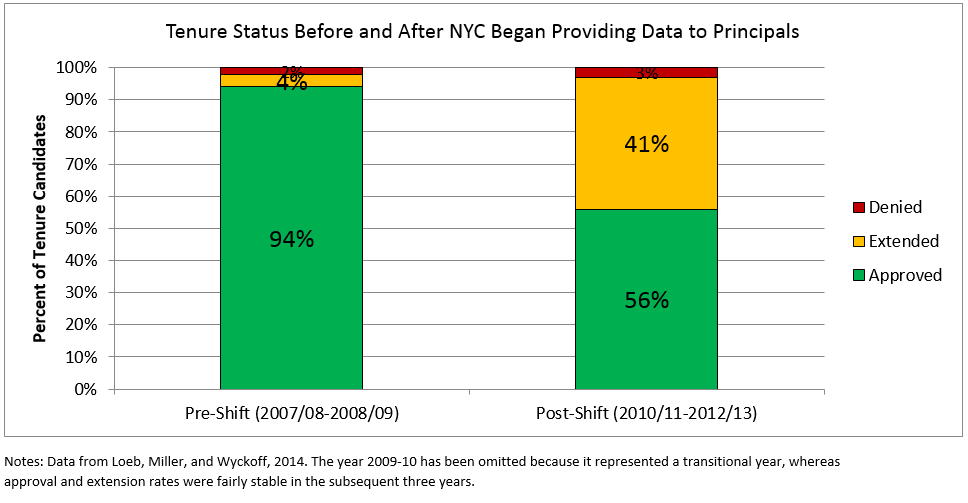NYC’s Teacher Tenure Reform: Good or Bad for Equity?
Five years ago, New York City began providing data — including evaluation scores — to principals about their tenure candidates. Principals could use that information to decide whether to approve or deny tenure — or simply extend the decision another year, in cases where teachers hadn’t yet demonstrated their full potential.
Since then, fewer teachers have gotten tenure, and many more teachers now get extensions on the decision each year. (The percent of teachers denied tenure has remained about the same.)
Extensions, however, are more common in schools serving relatively higher percentages of black and low-income students, according to research presented at the CALDER conference last month. Researchers noted these three key findings:
- First, schools with relatively higher percentages of black and low-income students were more likely to extend or deny teachers, because these schools had relatively more tenure candidates with low evaluation ratings (which were the basis of the decision).
- Second, teachers who received extensions were more likely than approved teachers to voluntarily transfer to another school or exit teaching altogether, presumably because they received the message from their principals that they were underperforming.
- Third, some evidence suggests that the teachers who voluntarily left would likely be replaced by more effective teachers, given the average effectiveness of teachers who were newly hired or transferred in during the same period.
This model raises some important lessons for other states and districts considering tenure reforms: First, a more balanced approach to tenure is possible, particularly if it’s grounded in school-level decision-making and transparent information. Second, shifts in district practice may not impact all schools equally, and the extent to which they positively or negatively influence students depends greatly on school leadership. Here’s why:
On the one hand, the NYC approach likely induced higher levels of turnover in schools with large black and low-income populations, potentially fostering instability and undermining efforts to provide students with consistent instruction. But, the teachers who were extended (and subsequently left) tended to be less effective than teachers who were approved for tenure. Attrition for this group might be desirable, particularly in high-need schools, and especially if teachers who voluntarily departed were replaced by stronger teachers.
In sum, in many schools serving large black and low-income populations, the reform may have exacerbated turnover (bad), but the turnover was concentrated among less effective teachers (good).
Whether this approach tips more toward good or bad in practice likely depends on the quality of leadership in each school building. For this approach to work well for students, school leaders would need to prioritize the development of teachers not approved for tenure and ensure that culture and instructional practice are maintained in the midst of turnover.







